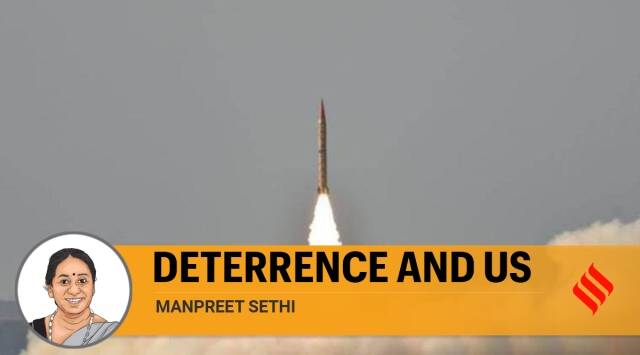A Ground View of the Indian Space Policy 2023
THE HINDU
APLN member Rakesh Sood writes on the Indian Space Policy 2023, released by the Indian Space Research Organisation (ISRO). He argues that while the Space Policy 2023 reflects good intentions and a vision for the future, there is an urgent need to provide a timeframe for the necessary legal framework to successfully launch India into the Second Space Age. Read the original article here.
On April 20 this year, the Indian Space Research Organisation (ISRO) released the Indian Space Policy 2023 that had been in the works for some years. The document has been received positively by industry; however, it needs to be followed up with suitable legislation, accompanied by clear rules and regulations. Just preceding this, this writer wrote the article, “Awaiting lift-off into the Second Space Age” (April 10, 2023), which said that India’s modest entry into the First Space Age followed by its many gains should be used to help the country tap the vast potential in the Second Space Age.
Until the early 1990s, India’s space industry and space economy was defined by ISRO. Private sector involvement was limited to building to ISRO designs and specifications. The Second Space Age began with the licensing of private TV channels, the explosive growth of the internet, mobile telephony, and the emergence of the smartphone. Today, while ISRO’s budget is approx. $1.6 billion, India’s space economy is over $9.6 billion. Broadband, OTT and 5G promise a double-digit annual growth in satellite-based services. It is estimated that with an enabling environment, the Indian space industry could grow by 2030 to $60 billion, directly creating more than 2 lakh jobs.
Yet, it is the enabling policy environment that has proved elusive. The first SATCOM policy was introduced in 1997. It contained guidelines for foreign direct investment (FDI) in the satellite industry that were subsequently further liberalised but never generated much enthusiasm. Today, more than half the transponders beaming TV signals into Indian homes are hosted on foreign satellites resulting in an annual outflow of over half a billion dollars.
A remote sensing data policy was introduced in 2001, which was amended in 2011; in 2016, it was replaced by a National Geospatial Policy that has been further liberalised in 2022. Yet, Indian users including the security and defence agencies spend nearly a billion dollars annually to procure earth observation data and imagery from foreign sources.
To streamline matters, a draft Space Activities Bill was brought out in 2017 and went through a long consultative process. It lapsed in 2019 with the outgoing Lok Sabha. The government was expected to introduce a new bill by 2021 but appears to have contented itself with the new policy statement.
What is different
To be fair, the Indian Space Policy 2023 is qualitatively different from previous efforts. It is a short 11-page document, which includes three pages devoted to definitions and abbreviations. The Vision is to “enable, encourage and develop a flourishing commercial presence in space” that suggests an acceptance that the private sector is a critical stakeholder in the entire value chain of the space economy. It makes five key points. It defines its role in India’s “socio-economic development and security, protection of environment and lives, pursuing peaceful exploration of outer space, stimulation of public awareness and scientific quest.”
First, this is the only reference to ‘security’ in the document, making it clear that the focus is on civilian and peaceful applications. Considering that space-based intelligence, reconnaissance, surveillance, communication, positioning, and navigation capabilities are increasingly seen as mission critical by the defence services, that India conducted a successful A-SAT (anti-satellite) direct ascent test in March 2019, and, in the same year set up the Defence Space Agency and the Defence Space Research Organisation, it is reasonable to infer that a defence-oriented space security policy will be a separate document. The United States puts out a space policy under the aegis of the White House Office of the Science and Technology Policy, National Aeronautics and Space Administration (NASA) and the Departments of Commerce and Transportation while the Department of Defence and the Director of National Intelligence are responsible for the space security strategy.
Second, the policy lays out a strategy and then spells out the roles of Department of Space, ISRO, Indian National Space Promotion and Authorisation Centre (IN-SPACe) set up in 2020, and New Space India Ltd (NSIL), a public sector undertaking set up in 2019 under the Department of Space as the commercial arm of ISRO to replace the now defunct Antrix.
Third, it states that ISRO will “transition out of the existing practice of being present in the manufacturing of operational space systems. Hereafter, mature systems shall be transferred to industries for commercial exploitation. ISRO shall focus on R&D in advanced technology, proving newer systems and realisation of space objects for meeting national prerogatives.” Another of ISRO’s tasks in the new Policy is to “share technologies, products, processes and best practices with NGEs (non-government entities) and/or Government companies.” This implies that ISRO will now use its biggest asset, its qualified and talented manpower to concentrate on cutting edge R&D and long-term projects like Chandrayaan and Gaganyaan.
As ISRO’s commercial arms, NSIL will become the interface for interacting with the industry, undertake commercial negotiations and provide handholding support to ensure smooth and efficient transfer of technologies.
Private sector role
Fourth, the NGEs (this includes the private sector) are “allowed to undertake end-to-end activities in the space sector through establishment and operation of space objects, ground-based assets and related services, such as communication, remote sensing, navigation, etc”. Satellites could be self-owned, procured or leased; communication services could be over India or outside; and remote sensing data could be disseminated in India or abroad. NGEs can design and operate launch vehicles for space transportation and establish their own infrastructure. NGEs can now make filings with the International Telecommunication Union (ITU) and engage in commercial recovery of asteroid resources. In short, the entire gamut of space activities is now open to the private sector. Security agencies can task NGEs for procuring tailor made solutions to address specific requirements.
The activities of the NGEs will be in keeping with guidelines and regulation to be issued by IN-SPACe. It is expected to act as the single window agency for authorising space activities “by government entities and NGEs,” in keeping with safety, security, international obligations and overall national interests.
Finally, IN-SPACe is expected to create and “stable and predictable regulatory framework” that will ensure a level playing field for the NGEs. It will act as a promoter by setting up industry clusters and as the regulator, issue guidelines on liability issues.
The gaps
The policy sets out an ambitious role for IN-SPACe but provides no timeframe for the necessary steps ahead. Neither is there an indicative timeline for ISRO’s transitioning out of its current practices nor is there a schedule for IN-SPACe to create the regulatory framework. The policy framework envisaged will need clear rules and regulations pertaining to FDI and licensing, government procurement to sustain the new space start-ups, liability in case of violations and an appellate framework for dispute settlement.
A regulatory body needs legislative authority. The Reserve Bank of India was set up by the 1934 RBI Act, SEBI by the 1992 SEBI Act, Telecom Regulatory Authority of India (TRAI) by the 1997 TRAI Act. IN-SPACe is expected to authorise space activities for all, both government and non-government entities. Currently, its position is ambiguous as it functions under the purview of the Department of Space. The Secretary (Space) is also Chairman of ISRO, the government entity to be regulated by IN-SPACe.
The Space Policy 2023 is a forward-looking document reflecting good intentions and a vision. But it is not enough. What is urgently needed is a timeframe to provide the necessary legal framework to translate this vision into reality, to successfully launch India into the Second Space Age.
Image: ‘The ‘Vision’ is to “enable, encourage and develop a flourishing commercial presence in space” that suggests an acceptance that the private sector is a critical stakeholder in the entire value chain of the space economy’ | Photo Credit: S.R. RAGHUNATHAN




